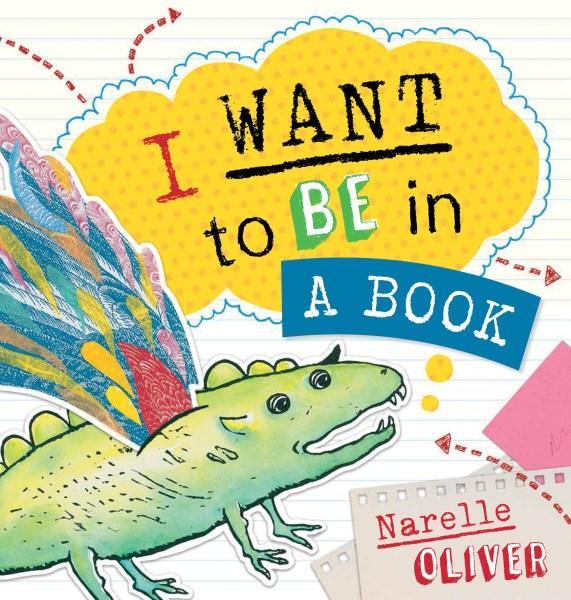Narelle Oliver, I Want to be in a Book, Scholastic Australia, 1 July 2017, 32pp., $24.99 (hbk) ISBN 9781743811634
Cecil is a very patient creature. For most of his life he had existed on a pin board, a sketch on a piece of paper. He had seen other characters come and go, featured in their own book. Cecil’s one wish was to be in his own book. He imagined the adventures he could have and the places he would visit. As he was wishing with all his might, he came away from the paper and down on to the table, only to be told he would not get into a book looking the way he did. But he tried even harder and sprang into a book. It was not what he had expected though, and his adventures were dangerous and daring. Returning to the table he finds another book, a different book, just for him.
This book is a wonderful fusion of visual and verbal texts, coming together to make a true and unique picture book. In typical Narelle Oliver style, picture book codes have been used to effect to convey the story. Line, colour and direction are all surreptitiously used to influence reading. Frames vary throughout, fulfilling their purpose of influencing pace and mood, while collage adds a texture.
There are various postmodern tendencies in this book. The most obvious and favourites of mine are the use of intratextuality and self-referentiality. Narelle Oliver alludes to her own work throughout this picture book, in the verbal text, but most obviously, in the visual text. Many aspects of her illustrative style and settings from her previous works are evident as Cecil visits various books. They make the reader want to gather all of Narelle’s books together and read all of them at once! The self-referential feature is, in my mind, the making of the book. Cecil so desperately wants to be in a book, and he is. He is the main character of this book, but is also seen throughout the text in other potential books. This book, and other Cecil books, can be seen on the last page, explicitly drawing attention to itself.
The nontraditional use of plot, character and/or setting, extended to the setting of Narelle Oliver’s desk, is another postmodern feature. Various illustrative styles used throughout the book give it an edge of unexpectedness. This book will certainly join other quality metafictional picture books available to young readers.
Sadly, this is Narelle Oliver’s last publication, as she passed away just before its completion. She is, and will be for some time, sadly missed in many people’s lives, not the least the children’s literature community. This last creation is an absolute gem. It will be at home in school libraries and should be purchased in the multiples for public libraries. It is one that will be visited again and again by many readers, and not just the young audience for whom it is intended.
Teacher Notes can be found on the Scholastic website.
Reviewed by Liz Derouet


